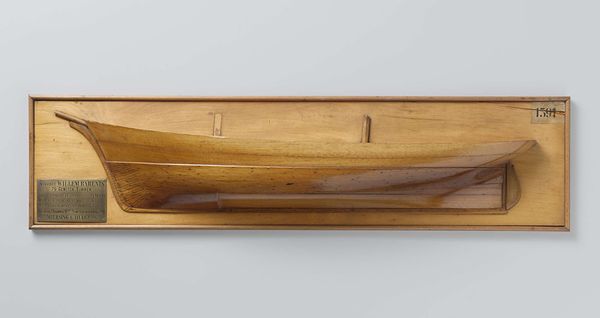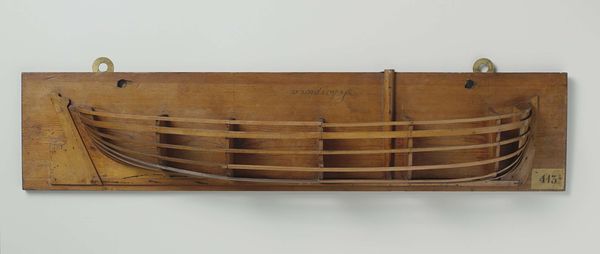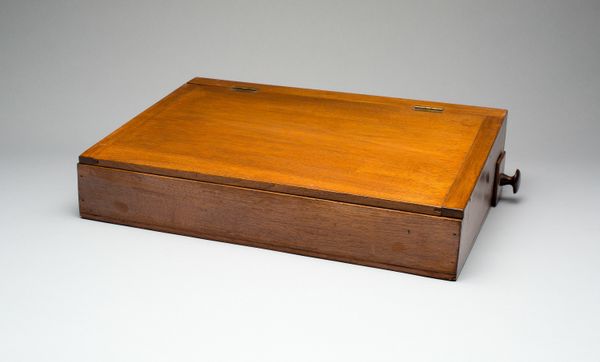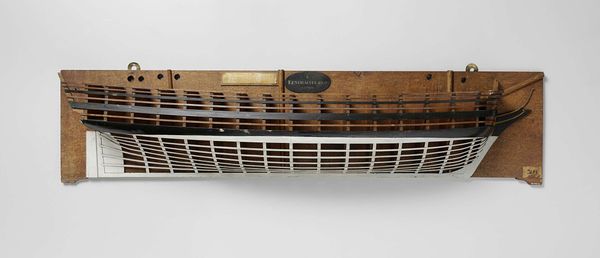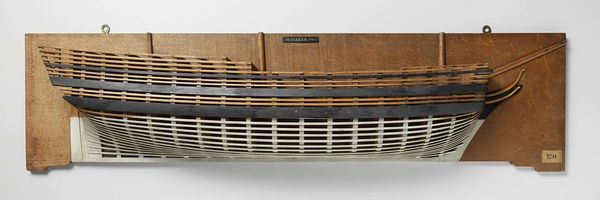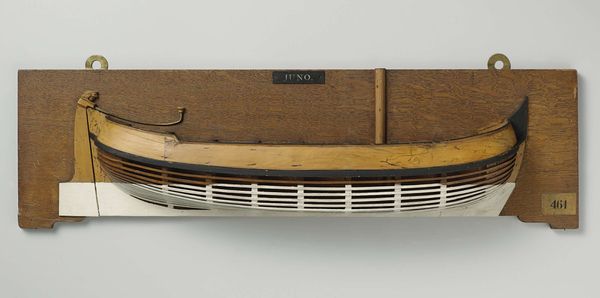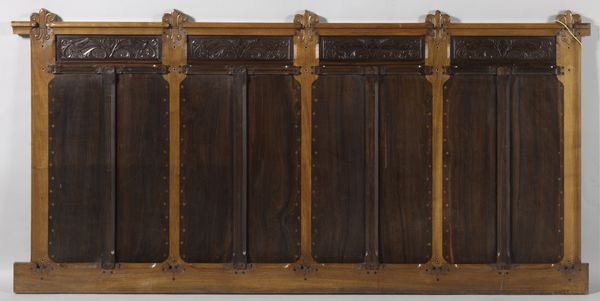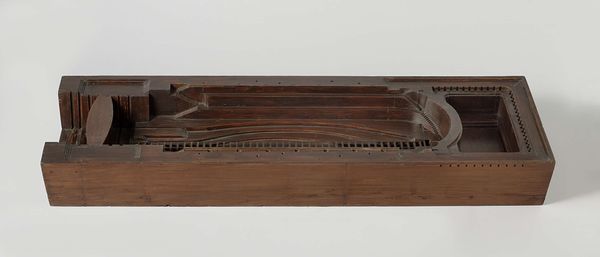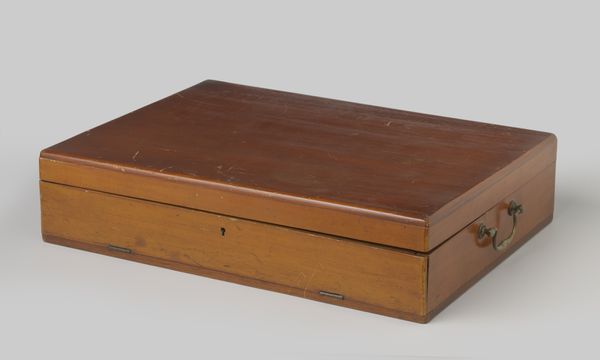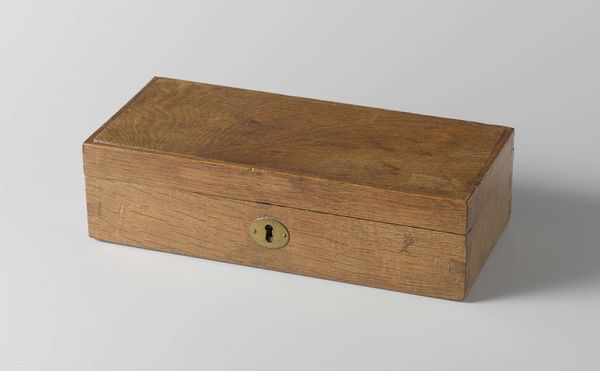
carving, wood
#
carving
#
wood
Dimensions: height 22.1 cm, width 43.8 cm, depth 8.5 cm
Copyright: Rijks Museum: Open Domain
Curator: Looking at this piece, I feel an immediate sense of calm. It’s so simple, the lines are clean, and the wood has such a warm tone. Editor: Yes, the simplicity is compelling. What we have here is an 1859 wooden carving, titled “Model of a Caisson.” While the artist remains anonymous, its function offers us some historical context. Curator: So, what is a caisson in this context? Editor: A caisson is essentially a watertight chamber, used in construction work below the water line, like building bridge supports or underwater tunnels. The caisson would be sunk into the water, allowing workers to excavate and build within a dry environment. Think about the social implications. Its use speaks to the mid-19th century's focus on industry, technology, and control over the natural world. Curator: Absolutely, but I wonder about labor conditions at the time. What did this period of engineering innovation actually mean for working-class people? Were caissons seen as progress for everyone, or did they also reinforce existing power structures? How dangerous would that work be? It feels connected to many narratives we explore even now around labour laws. Editor: It was indeed an exploitative period, particularly towards manual laborers and immigrants who performed those tasks. This model also hints at class disparities and perhaps the glorification of a select few who reaped the rewards. A detailed model like this may have also been shown at a world's fair, showing progress to global elites while those in difficult jobs weren't able to attend. Curator: Precisely. Even something that seems as straightforward as this model invites these crucial discussions, revealing deeper narratives about progress and social justice. Editor: Definitely. Considering the art's function, and the lack of acknowledgement to its creators, makes me ponder which societal stories continue to be left unacknowledged today.
Comments
No comments
Be the first to comment and join the conversation on the ultimate creative platform.
